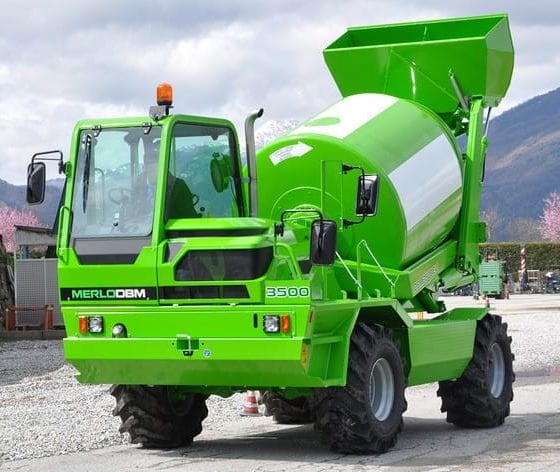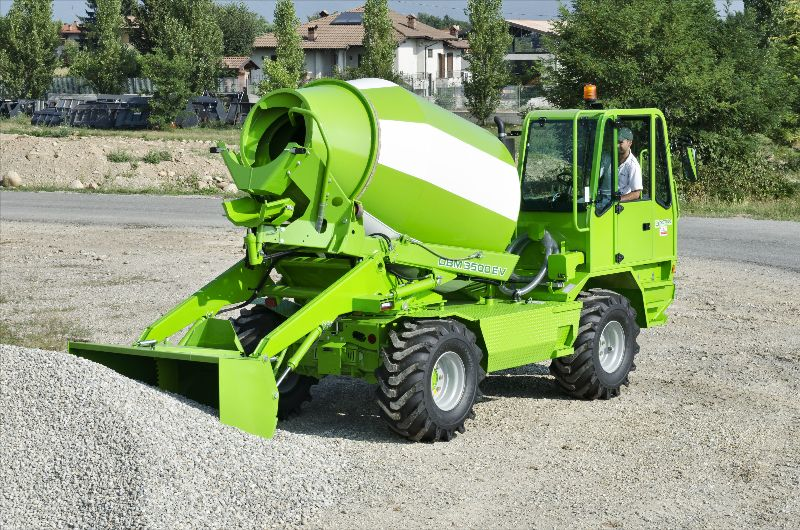Home » Construction Management (Page 7)
Category Archives: Construction Management
Confused About Asphalt Resilience? This New Report Can Help
Resilience is a term being discussed quite a bit when it comes to infrastructure, but what does it mean and how does it apply to building asphalt roads?
A recent report published by the National Asphalt Pavement Association seeks to answer those questions and more, as well as provide recommendations for asphalt contractors and others in the asphalt industry.
The Resilient Asphalt Pavements: Industry Solutions for the Resilience Goal says evaluating infrastructure resilience involves determining its risk to disaster, such as a flood, and then addressing that risk.
The report also includes the Federal Highway Administration’s definition of resilience:
“The ability to anticipate, prepare for, and adapt to changing conditions and withstand, respond to, and recover rapidly from disruptions.”
Examples of asphalt’s resilience include:
Rapid constructability to repair damaged roads and reduce user delay costs.Perpetual Pavement design to harden pavement systems.The ability to leverage maintenance overlays to harden the system and adapt to changing climate conditions.Use of recycled materials, when supply chains are cut off due to a disruptive event.Warm mix asphalt technologies to increase haul distance or assist in cold-weather environments during disaster response activities.Materials grounded in climate adaptation (i.e., Performance Graded asphalt binders).Porous asphalt pavements that reduce flood risks for communities.
The report also includes a case study on interstates that flooded in Iowa and techniques used to open roads quickly as well as save money.
In the report, authored by Drs. Benjamin Bowers and Fan Gu of Auburn University, 10 recommendations are proposed to improve asphalt pavement resilience.
It lays out these proposals for what asphalt contractors and producers should do:
Consider ways to make their facilities more resilient to ensure continuity of business operations and provide rapid response to an extreme event.Develop contingency plans and continuity of operations plans in the event of a disaster.
For more on the free 20-page report and its recommendations, click here.
Did you miss our previous article…
https://constructionosa.org/?p=90
Snorkel Cranks Out 5 New Lithium-Ion Battery Scissor Lifts
With their quiet, zero-emissions power systems, battery-electric rough terrain scissor lifts make a lot of sense. And Snorkel is making a lot of them.
The company recently announced production of five new lithium-ion battery powered models to add to its existing line of three electric rough terrain scissor lifts and telehandlers. The five new machines include versions of two narrow-width units, the S2255RTE and S2755RTE, as well as three standard width units, the S2770RTE, S3370RTE and S3970RTE.
The maintenance-free lithium-ion battery packs on the new machines last up to 22 times longer than lead-acid batteries thanks to built-in battery management systems. Suitable for a wide range of environments, the lithium-ion battery packs have been tested to as low as minus-77 degrees Fahrenheit and up to 140 degrees Fahrenheit. Models are offered standard with two 5.75-kilowatt lithium battery packs, with an additional 5.75-kilowatt battery pack option for extended range, heavy use applications or where long-distance driving is required.
According to the company, in both test conditions and real-life applications the standard two battery pack system has delivered at least an eight-hour shift on a single charge, and in some cases, up to one week between charges, subject to use. Unlike lead-acid batteries, the charging pattern for lithium-ion batteries is designed to seamlessly fit into a normal working day schedule and can be top-up charged during breaks and shift changes.

With zero emissions, Snorkel RTE scissor lifts can be used indoors and outdoors on the same job.SnorkelDesigned for outdoor applications, a powerful and efficient AC electric motor creates efficiencies in the hydraulic drive system with higher torque than a diesel engine. This provides improved gradeability and enhanced performance on rough terrain compared to traditional combustion engine scissor lifts.
The electric motor also delivers up to 62 percent less jobsite noise than the diesel equivalent, enabling the lifts to be used indoors or in work environments with noise regulations. And with no engine fan, blowing dust is reduced for safer and cleaner operation.
The Snorkel S2255RTE and S2755RTE reach maximum working heights of 27-feet, 10-inches and 33 feet, 1-inch and offer lifting capacities of 925 pounds and 660 pounds respectively. With their narrow width of 4 feet, 9-inches, these lifts feature a 4 foot, 7-inch by 12-foot 8-inch platform with the 3-foot, 11-inch roll-out deck extension deployed. Weighing less than 6,062 pounds, these lifts can be towed by a car or light commercial vehicle on a trailer between jobs.
Measuring 5-foot, 10-inches wide, the S2770RTE can lift up to 1,250 pounds to a maximum working height of 33 feet, while the S3370RTE can lift 1,000 pounds to a working height of up to 39 feet. Reaching up to 45 feet, the S3970RTE is the largest compact rough terrain scissor lift in the family and is capable of lifting up to 771 pounds.
All five lifts are available with high grip, non-marking tires for indoor/outdoor use, and have four-wheel drive capabilities with 35-percent gradeability and an oscillating axle. Four auto-leveling stabilizers come as standard. Snorkel’s inverted leg design protects the cylinder rod from damage and debris and can level up to 6 degrees front-to-rear, and 10 degrees side-to-side.
These same models will also continue to be offered as RT versions with a diesel engine or as BE versions with Snorkel’s bi-energy solution that enables the operator to switch between an internal combustion engine and lead-acid battery power for indoor/outdoor working.
Did you miss our previous article…
https://constructionosa.org/?p=86
Why is Construction Employment Still Lagging Pre-Covid Levels?
Construction employment in June remained below the pre-pandemic levels of February 2020 in 39 states, according to an analysis by the Associated General Contractors of America.
New York and Wyoming suffered the worst losses, while Utah and Idaho added the most construction jobs. New York, Vermont and Iowa had the biggest declines in June. Georgia and Kentucky were the top gainers.
AGC officials put the blame on supply chain shortages and rising material prices, which are undermining demand for new projects and impacting construction firms’ ability to hire workers.
“The construction industry is a long way from full recovery in most states, in spite of a hot homebuilding market in many areas,” said Ken Simonson, AGC chief economist. “Soaring materials costs, long production times for key items and delayed deliveries are causing owners to postpone projects.”
16 months into pandemic
From February 2020 to June 2021, New York shed the most construction jobs (54,300 jobs or 13.3%) followed by Texas (54,100 jobs, 6.9%) and California (36,500 jobs, 4%). Wyoming recorded the largest percentage loss (15.3%, 3,500 jobs), followed by Louisiana (15.1%, 20,700 jobs) and New York.
On the positive side, Utah added 7,000 jobs, (6.1%), followed by Idaho with 4,400 jobs (8%), South Dakota (1,400 jobs, 5.9%) and Rhode Island (1,200 jobs, 5.9%). Idaho claimed the largest percentage gain, followed by Utah, Rhode Island and South Dakota.
May to June 2021
From May to June of this year, construction employment decreased in 25 states, increased in 24 states and D.C., and held steady in Maine. The largest declines occurred in New York, which lost 6,900 construction jobs (1.9%), followed by Pennsylvania (4,100 jobs, 1.6%) and Texas (3,300 jobs, 1.3%). The steepest percentage declines since May occurred in Vermont (3.5%, 500 jobs), followed by New York, Alabama (1.9%, 1,700 jobs), and North Dakota (1.9%, 500 jobs).
Georgia added the most construction jobs between May and June (5,700 jobs, 2.9%), followed by Kentucky (2,700 jobs, 3.4%) and Florida (2,500 jobs, 0.4%). Kentucky had the largest percentage gain for the month, followed by Alaska (3.0%, 500 jobs) and Georgia.
Tariffs, logistics and unemployment
Association officials cautioned that construction employment is unlikely to grow in many parts of the country until supply chain challenges improve. They added that President Joe Biden could help by removing tariffs on key construction materials. The AGC also noted that ending the unemployment supplements would add to the pool of workers for manufacturers, shippers and construction firms to hire.
“Easing tariffs will help, but what the construction supply chain needs are workers to manufacture the products, ship them to contractors and build the projects the economy demands,” said Stephen E. Sandherr, the association’s chief executive officer. “Unemployment supplements helped families survive the pandemic-related lockdowns, but they are undermining the post-pandemic recovery.”
Did you miss our previous article…
https://constructionosa.org/?p=55
Drum Rotates Up to 180 Degrees on Merlo DBM 3500 Mini Mixer
Merlo has introduced its new DBM 3500 Mini Cement Mixer to the U.S. market.
Along with its compact stature, the mixer is maneuverable on tight jobsites, able to discharge concrete up to 330 degrees around the machine. The drum can rotate laterally 180 degrees, and the chute provides additional reach.
The mixer also has a tight turning radius, and the drum has a reduced incline angle for further agility.
It can produce 37.7 square feet of concrete in less than 15 minutes, the company says. The 1,321-gallon drum can deliver 4.6 cubic yards of concrete. A self-loading bucket can handle up to 25 cubic feet of aggregate at each load cycle. Hydraulics lift and rotate the bucket as needed, while the door automatically opens to unload aggregate into the drum. The pump moves 66 gallons of water per minute into the mixing drum.
Merlo duplicated the in-cab controls outside the mixer at ground level. “From the ground, an operator can control engine acceleration, water pump activation, drum rotation, barrel lift, chute lift and emergency stop,” the company says.

The Merlo DBM 3500 Mini Cement Mixer can produce 37.7 square feet of concrete in less than 15 minutes, the company says.MerloThe ROP-certified, enclosed cab has double controls split between the front and rear. The front controls are for driving. The seat rotates 180 degrees to access the rear controls, which manage the mixing drum and self-loading bucket and also drive the vehicle. A lever reverses travel direction. Travel speed is up to 25 mph.
The mixer runs on a 100-horsepower Deutz diesel engine mounted on the side for increased ventilation and access.
Other features include four wheel drive with three steering modes, hydrostatic transmission, and portal axles for increased ground clearance of 16 inches. It is designed for any terrain, the company says.

The Merlo DBM 3500 Mini Cement Mixer can also be operated at ground level.MerloThe water tank has a 246-gallon capacity. Max unloading height is 7 feet.
The DBM 3500 is 12.7 feet high, 7.7 feet wide and 17.9 feet long.
It is sold in the U.S. through importer Applied Machinery Sales.

The hydraulic self-loading bucket on the Merlo DBM 3500 Mini Cement Mixer can hold up to 25 cubic feet of aggregate to load into the mixing drum.Merlo
Always check our latest articles at…
https://constructionosa.org//category/construction-management